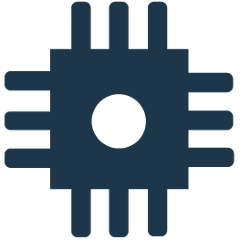com.ibm.wiotp.sdk.swagger
IBM Watson IoT Platform Organization Administration REST APIs
- API version: 0002
- Build date: 2019-04-30T18:06:21.121+01:00
The Organization Adminstration APIs can be used to configure an organization (including creating and deleting devices), checking usage, service status and diagnosing device connection problems. For information on this API, and how to use Watson IoT Platform APIs generally see the API documentation.
Automatically generated by the Swagger Codegen
Requirements
Building the API client library requires:
- Java 1.7+
- Maven/Gradle
Installation
To install the API client library to your local Maven repository, simply execute:
mvn clean install
To deploy it to a remote Maven repository instead, configure the settings of the repository and execute:
mvn clean deploy
Refer to the OSSRH Guide for more information.
Maven users
Add this dependency to your project's POM:
<dependency>
<groupId>com.ibm.wiotp.sdk</groupId>
<artifactId>com.ibm.wiotp.sdk.swagger</artifactId>
<version>1.0.0</version>
<scope>compile</scope>
</dependency>
Gradle users
Add this dependency to your project's build file:
compile "com.ibm.wiotp.sdk:com.ibm.wiotp.sdk.swagger:1.0.0"
Others
At first generate the JAR by executing:
mvn clean package
Then manually install the following JARs:
target/com.ibm.wiotp.sdk.swagger-1.0.0.jartarget/lib/*.jar
Getting Started
Please follow the installation instruction and execute the following Java code:
import com.ibm.wiotp.swagger.*;
import com.ibm.wiotp.swagger.auth.*;
import com.ibm.wiotp.swagger.model.*;
import com.ibm.wiotp.swagger.api.DeviceBulkConfigurationApi;
import java.io.File;
import java.util.*;
public class DeviceBulkConfigurationApiExample {
public static void main(String[] args) {
ApiClient defaultClient = Configuration.getDefaultApiClient();
// Configure HTTP basic authorization: ApiKey
HttpBasicAuth ApiKey = (HttpBasicAuth) defaultClient.getAuthentication("ApiKey");
ApiKey.setUsername("YOUR USERNAME");
ApiKey.setPassword("YOUR PASSWORD");
DeviceBulkConfigurationApi apiInstance = new DeviceBulkConfigurationApi();
DeviceBulkRegistrationRequestList devices = new DeviceBulkRegistrationRequestList(); // DeviceBulkRegistrationRequestList | Devices to be registered
try {
DeviceWithPasswordList result = apiInstance.bulkDevicesAddPost(devices);
System.out.println(result);
} catch (ApiException e) {
System.err.println("Exception when calling DeviceBulkConfigurationApi#bulkDevicesAddPost");
e.printStackTrace();
}
}
}
Documentation for API Endpoints
All URIs are relative to https://localhost/api/v0002
| Class | Method | HTTP request | Description |
|---|---|---|---|
| DeviceBulkConfigurationApi | bulkDevicesAddPost | POST /bulk/devices/add | Register multiple new devices |
| DeviceBulkConfigurationApi | bulkDevicesGet | GET /bulk/devices | List devices |
| DeviceBulkConfigurationApi | bulkDevicesRemovePost | POST /bulk/devices/remove | Delete multiple devices |
| DeviceConfigurationApi | deviceTypesTypeIdDevicesDeviceIdDelete | DELETE /device/types/{typeId}/devices/{deviceId} | Remove device |
| DeviceConfigurationApi | deviceTypesTypeIdDevicesDeviceIdDevicesGet | GET /device/types/{typeId}/devices/{deviceId}/devices | Get devices that are connected through the gateway specified by id {deviceId} |
| DeviceConfigurationApi | deviceTypesTypeIdDevicesDeviceIdEdgestatusGet | GET /device/types/{typeId}/devices/{deviceId}/edgestatus | Return the status of containers from an edge node. |
| DeviceConfigurationApi | deviceTypesTypeIdDevicesDeviceIdEdgestatusServiceIdGet | GET /device/types/{typeId}/devices/{deviceId}/edgestatus/{serviceId} | Return the status of containers from an edge node filtering by service. |
| DeviceConfigurationApi | deviceTypesTypeIdDevicesDeviceIdGet | GET /device/types/{typeId}/devices/{deviceId} | Get device |
| DeviceConfigurationApi | deviceTypesTypeIdDevicesDeviceIdPut | PUT /device/types/{typeId}/devices/{deviceId} | Update device |
| DeviceConfigurationApi | deviceTypesTypeIdDevicesGet | GET /device/types/{typeId}/devices | List devices |
| DeviceConfigurationApi | deviceTypesTypeIdDevicesPost | POST /device/types/{typeId}/devices | Add device |
| DeviceProblemDeterminationApi | logsConnectionGet | GET /logs/connection | List device connection log events |
| DeviceTypeConfigurationApi | deviceTypesGet | GET /device/types | List device types |
| DeviceTypeConfigurationApi | deviceTypesPost | POST /device/types | Create device type |
| DeviceTypeConfigurationApi | deviceTypesTypeIdDelete | DELETE /device/types/{typeId} | Delete device type |
| DeviceTypeConfigurationApi | deviceTypesTypeIdGet | GET /device/types/{typeId} | Get device type |
| DeviceTypeConfigurationApi | deviceTypesTypeIdPut | PUT /device/types/{typeId} | Update device type |
| OrganizationConfigurationApi | rootGet | GET / | Get organization details |
| ServiceStatusApi | serviceStatusGet | GET /service-status | Retrieve the status of services for an organization |
| UsageManagementApi | usageDataTrafficGet | GET /usage/data-traffic | Retrieve the amount of data used |
Documentation for Models
- ContainerStatus
- DataTraffic
- DataTrafficDetail
- DeploymentOverrides
- DeploymentOverridesDeploymentOverrides
- Device
- DeviceAdditionRequest
- DeviceAdditionResponse
- DeviceBatchResponse
- DeviceBulkDeletionRequestList
- DeviceBulkDeletionResponse
- DeviceBulkDeletionResponseList
- DeviceBulkRegistrationRequest
- DeviceBulkRegistrationRequestList
- DeviceConcise
- DeviceExtensionDiagRefs
- DeviceExtensionRefs
- DeviceFirmware
- DeviceInfo
- DeviceListResponse
- DeviceLocation
- DeviceMgmt
- DeviceMgmtSupports
- DeviceRegistration
- DeviceRegistrationAuth
- DeviceStatus
- DeviceStatusAlert
- DeviceTarget
- DeviceType
- DeviceTypeCreationRequest
- DeviceTypeListResponse
- DeviceTypeUpdateRequest
- DeviceUpdateRequest
- DeviceWithPasswordList
- EdgeConfiguration
- EdgeServices
- EdgeStatusResponse
- EdgeStatusResponseByService
- EdgeStatusResponseContainers
- ErrorMessage
- ErrorMessageException
- HistorianConfig
- InvalidRequestMessage
- ListOfLogEntries
- LogEntry
- Metadata
- Organization
- OrganizationBluemixConfig
- OrganizationConfig
- OrganizationIbmMarketplaceConfig
- SearchResultMetaInformation
- ServiceStatus
- UpdateableDeviceLocation
- UpdateableDeviceStatus
- UpdateableDeviceStatusAlert
Documentation for Authorization
Authentication schemes defined for the API:
ApiKey
- Type: HTTP basic authentication
Recommendation
It's recommended to create an instance of ApiClient per thread in a multithreaded environment to avoid any potential issues.
